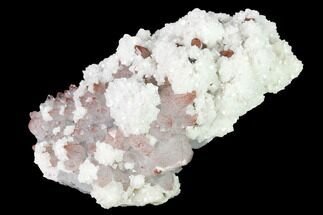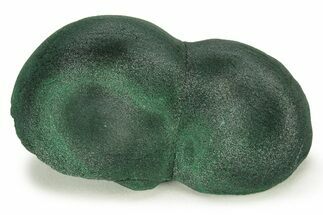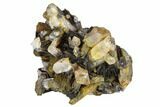This Specimen has been sold.
2.8" Hematite Rosettes and Quartz Association - China
This specimen displays an association of black hematite rosettes and partial quartz crystals. There are small amounts of hematite (iron oxidation) on the quartz crystals, indicated by its orange color. Almost all of the quartz crystals on this specimen have some sort of damage to their terminations. This specimen was collected from Jinlong Hill in the Guangdong Province of China
About Quartz
Quartz is the name given to silicon dioxide (SiO2) and is the second most abundant mineral in the Earth's crust. Quartz crystals generally grow in silica-rich environments--usually igneous rocks or hydrothermal environments like geothermal waters--at temperatures between 100°C and 450°C, and usually under very high pressure. In either case, crystals will precipitate as temperatures cool, just as ice gradually forms when water freezes. Quartz veins are formed when open fissures are filled with hot water during the closing stages of mountain formation: these veins can be hundreds of millions of years old.
Quartz is the name given to silicon dioxide (SiO2) and is the second most abundant mineral in the Earth's crust. Quartz crystals generally grow in silica-rich environments--usually igneous rocks or hydrothermal environments like geothermal waters--at temperatures between 100°C and 450°C, and usually under very high pressure. In either case, crystals will precipitate as temperatures cool, just as ice gradually forms when water freezes. Quartz veins are formed when open fissures are filled with hot water during the closing stages of mountain formation: these veins can be hundreds of millions of years old.
SPECIES
Quartz & Hematite
LOCATION
Jinlong Hill, Guangdong Province, China
SIZE
2.8 x 2.7"
CATEGORY
ITEM
#112879
 Reviews
Reviews














